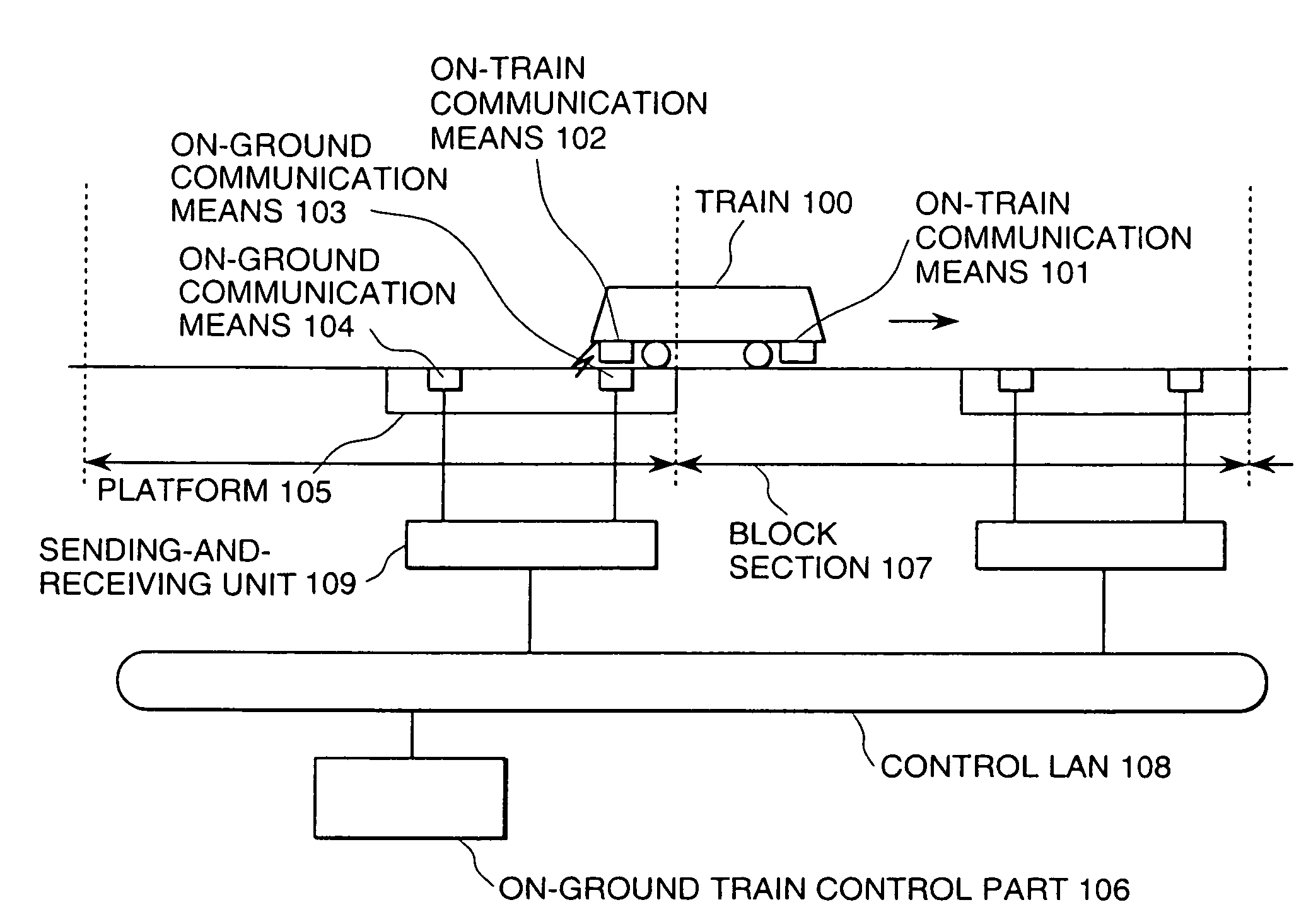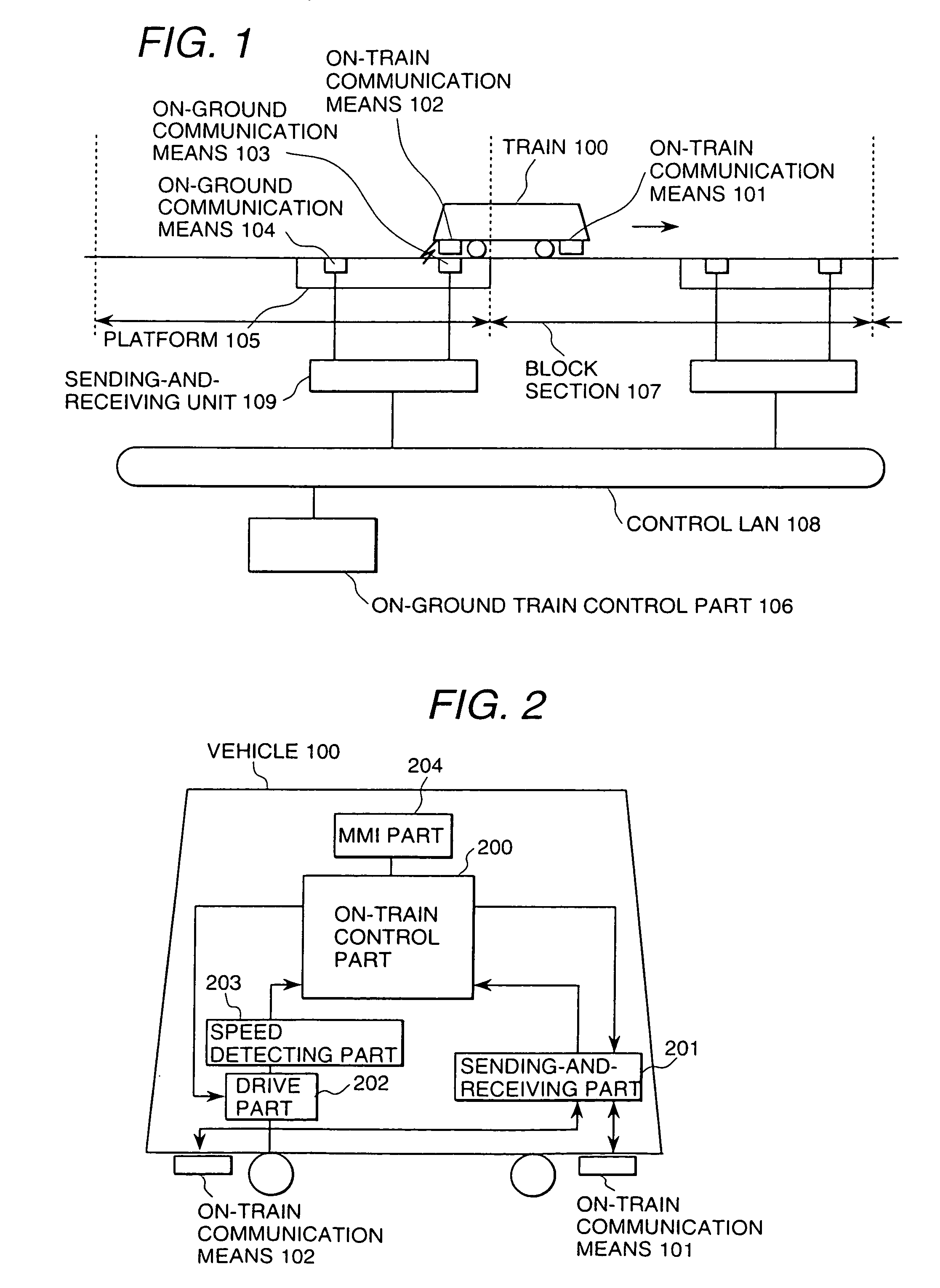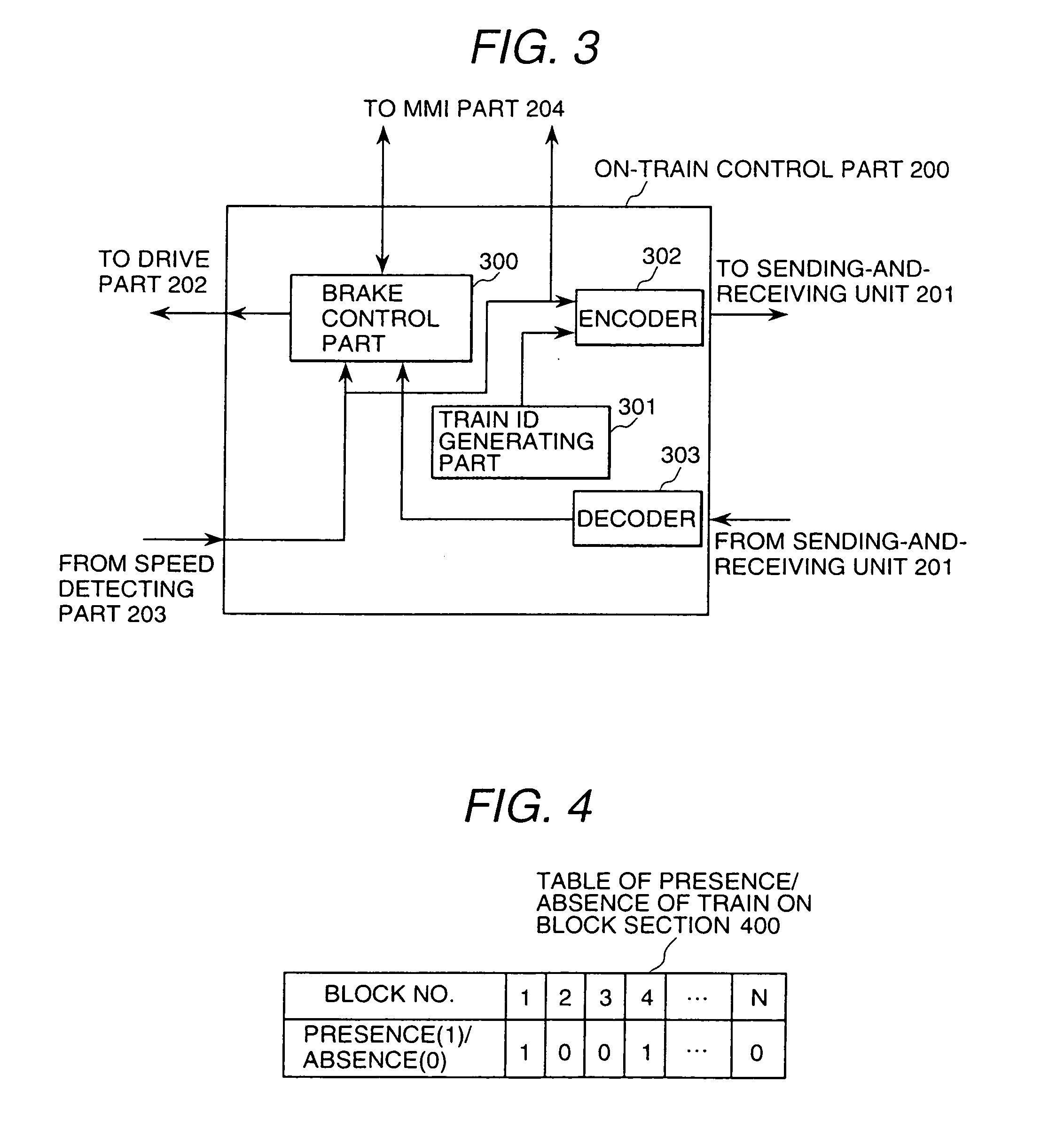Signal safety method, signal safety apparatus and signal safety system
- Summary
- Abstract
- Description
- Claims
- Application Information
AI Technical Summary
Benefits of technology
Problems solved by technology
Method used
Image
Examples
Embodiment Construction
[0029]An embodiment of a signal safety system in accordance with the present invention will be described below, referring to the accompanied drawings. FIG. 1 shows the construction of the objective signal safety system.
[0030]The signal safety system comprises a train 100; on-train communication devices of on-train communication means 101 and 102 for sending information in the train to the ground side; on-ground communication devices of on-ground communication means 103 and 104 capable of performing communication with the on-train communication devices; a platform 105; an on-ground train control part 106 for managing and controlling operation of the railway train; a control LAN 108 of a network; and a sending-and-receiving part 109 for sending and receiving the information through the on-ground control part and the network. The on-train communication means 101 and the on-train communication means 102 are arranged in the top end and in the rear end of the train 100, respectively. The ...
PUM
 Login to View More
Login to View More Abstract
Description
Claims
Application Information
 Login to View More
Login to View More - R&D
- Intellectual Property
- Life Sciences
- Materials
- Tech Scout
- Unparalleled Data Quality
- Higher Quality Content
- 60% Fewer Hallucinations
Browse by: Latest US Patents, China's latest patents, Technical Efficacy Thesaurus, Application Domain, Technology Topic, Popular Technical Reports.
© 2025 PatSnap. All rights reserved.Legal|Privacy policy|Modern Slavery Act Transparency Statement|Sitemap|About US| Contact US: help@patsnap.com



